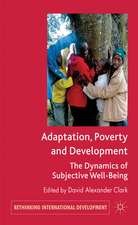Agriculture, Poverty and Reform in Iran (RLE Iran D): Routledge Library Editions: Iran
Autor Mohammad Amaden Limba Engleză Hardback – 28 feb 2011
Din seria Routledge Library Editions: Iran
-
 Preț: 260.86 lei
Preț: 260.86 lei - 35%
 Preț: 994.05 lei
Preț: 994.05 lei -
 Preț: 356.75 lei
Preț: 356.75 lei - 36%
 Preț: 821.82 lei
Preț: 821.82 lei - 36%
 Preț: 824.17 lei
Preț: 824.17 lei -
 Preț: 327.21 lei
Preț: 327.21 lei - 37%
 Preț: 621.93 lei
Preț: 621.93 lei - 36%
 Preț: 992.06 lei
Preț: 992.06 lei - 36%
 Preț: 849.11 lei
Preț: 849.11 lei - 37%
 Preț: 622.63 lei
Preț: 622.63 lei - 35%
 Preț: 1052.40 lei
Preț: 1052.40 lei - 18%
 Preț: 1058.69 lei
Preț: 1058.69 lei - 38%
 Preț: 763.97 lei
Preț: 763.97 lei - 36%
 Preț: 823.44 lei
Preț: 823.44 lei - 35%
 Preț: 994.76 lei
Preț: 994.76 lei - 18%
 Preț: 993.55 lei
Preț: 993.55 lei - 32%
 Preț: 338.42 lei
Preț: 338.42 lei - 38%
 Preț: 764.87 lei
Preț: 764.87 lei - 28%
 Preț: 240.07 lei
Preț: 240.07 lei - 38%
 Preț: 764.87 lei
Preț: 764.87 lei - 36%
 Preț: 993.14 lei
Preț: 993.14 lei - 18%
 Preț: 998.77 lei
Preț: 998.77 lei - 38%
 Preț: 762.36 lei
Preț: 762.36 lei - 36%
 Preț: 823.99 lei
Preț: 823.99 lei - 38%
 Preț: 765.59 lei
Preț: 765.59 lei - 36%
 Preț: 822.18 lei
Preț: 822.18 lei - 28%
 Preț: 276.08 lei
Preț: 276.08 lei - 35%
 Preț: 993.51 lei
Preț: 993.51 lei - 38%
 Preț: 764.87 lei
Preț: 764.87 lei - 36%
 Preț: 821.65 lei
Preț: 821.65 lei - 36%
 Preț: 823.26 lei
Preț: 823.26 lei - 36%
 Preț: 824.53 lei
Preț: 824.53 lei -
 Preț: 398.18 lei
Preț: 398.18 lei - 36%
 Preț: 992.06 lei
Preț: 992.06 lei - 36%
 Preț: 821.46 lei
Preț: 821.46 lei - 18%
 Preț: 1341.06 lei
Preț: 1341.06 lei
Preț: 765.40 lei
Preț vechi: 1240.09 lei
-38% Nou
Puncte Express: 1148
Preț estimativ în valută:
146.51€ • 159.19$ • 123.14£
146.51€ • 159.19$ • 123.14£
Carte tipărită la comandă
Livrare economică 21 aprilie-05 mai
Preluare comenzi: 021 569.72.76
Specificații
ISBN-13: 9780415614382
ISBN-10: 0415614384
Pagini: 192
Dimensiuni: 156 x 234 mm
Greutate: 0.52 kg
Ediția:1
Editura: Taylor & Francis
Colecția Routledge
Seria Routledge Library Editions: Iran
Locul publicării:Oxford, United Kingdom
ISBN-10: 0415614384
Pagini: 192
Dimensiuni: 156 x 234 mm
Greutate: 0.52 kg
Ediția:1
Editura: Taylor & Francis
Colecția Routledge
Seria Routledge Library Editions: Iran
Locul publicării:Oxford, United Kingdom
Public țintă
General, Postgraduate, Professional, and UndergraduateCuprins
1. Introduction. 2 Agricultural backwardness in theory. 3 Pre-reform Iranian village. 4 Theoretical analysis of land reform. 5 An analysis of the Iranian land reform programme. 6 The agrarian system after the land reform. 7 Economic consequences of the land reform. 8 Rural poverty and inequality after the reform.
Notă biografică
Multivolume collection by leading authors in the field
Descriere
This book assesses the economic consequences of land reform, focusing particularly on its effect on the living standards of the rural poor. Amid describes a ‘biomodal’ system of large and small farms that emerged after the reform. Large farms, with government support, modernized and grew more profitable cash crops, whereas small farms found difficulty in obtaining credit and continued to rely on traditional techniques and staple food crops. Land reform was not, the author argues, a success for the majority of the Iranian rural population who experienced virtually no improvement in living standards and a growth of rural inequality as a result.















